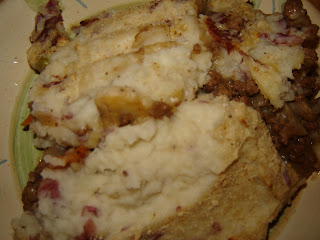
At one point, Zach and I discussed if we could temporarily go back to one period in American history, what it would be. I am pretty sure we both decided on the drafting of the constitution. Perhaps my second choice would be the first Thanksgiving. It is not that I imagine this day to be an outrageous celebration or anything particularly extravagant. It is more about what it would mean to me as someone from the future peeking back at how it all began. And I am not going to lie; it is also about the food. I am sure the kind of food prepared straight from the land in 1621 was not the tasty, inventive and genetically-modified kind of food we enjoy today for Thanksgiving. In fact, venison and wild fowl are the only two items on the menu for the first Thanksgiving of which there are any specific records. Sometimes I just think it would be fun to go back to simpler times as far as food is concerned to see how far we have come in some ways and see how little we have learned in other ways.
This is all to say my next recipe is something that goes way back, not necessarily to the first Thanksgiving, but certainly back to what can be considered "simpler times" when it comes to food. Cottage pie is believed to have originated in northern England and was served as a hearty dish for rural workers just after the British began adding potatoes to their diets. The dish was known as shepherd's pie when the meat was made with minced lamb and cottage pie when it was made with ground beef.
This recipe includes an ingredient that I never thought I would use in anything. After making this dish for the first time a few months ago without this ingredient, I decided it was slightly bland and needed a kick. That is why this particular recipe jumped out at me when I cam across it. Blog readers, meet horseradish:

Kick in the Cottage Pie: (a Rachel Ray recipe)
5 pounds Russet potatoes, peeled and cut into chunks (you can also use small new potatoes and including the skin)
1/2 to 3/4 C milk (use more or less depending how thick you like your mashed potatoes)
1 egg, beaten
1/4 C prepared horseradish
Salt and freshly ground black pepper
2 tablespoons extra-virgin olive oil
2 pounds lean ground sirloin
1 C frozen green peas
2 carrots, peeled and chopped or sliced 1/4-inch thick
1 large onion, chopped
1 fresh bay leaf
3 tablespoons flour
2 cups beef stock
1 tablespoon Worcestershire sauce
2 to 3 tablespoons chives, chopped
Handful of breadcrumbs (optional)
Peel potatoes (optional if you have chosen to use the small red ones).

Chop the vegetables. I bought these beautiful carrots from the farmers' market in Santa Monica.

Place the potatoes in a medium-size pot, cover them with cold water and bring to a boil. Salt the water and cook potatoes until fork tender, about 12-15 minutes. Drain the potatoes and allow them to cool slightly. Mash them with the milk then stir in the egg and horseradish. Season with salt and freshly ground black pepper and set aside.
While the potatoes are cooking, make the filling: Heat the olive oil in a large, deep skillet (preferably oven safe, but it is fine if you do not have one) over medium-high heat until it shimmers. Add the meat and brown it well, about 5 minutes. Add the vegetables and bay leaf to meat, season with salt and pepper and cook until the vegetables are softened, 8-10 minutes.

Sprinkle the flour around the pan, stir and cook for about 1 minute. Add the stock and bring up to a simmer to thicken the mix, 3-4 minutes. Discard the bay leaf and season the beef mixture with Worcestershire sauce, salt and pepper.
Turn broiler on and place rack in the middle of the oven.
Transfer the filling to a large casserole or baking dish (9" X 13") and top it with heaping spoonfuls of the horseradish mashed potatoes so they completely cover it (Or just place the potato mixture on top of the meat mixture if you are using an oven-safe skillet. I like to sprinkle some breadcrumbs over top of the mashed potatoes. Brown the potatoes under the broiler, about 5 minutes.

Garnish with chives and serve.

This recipe also freezes well in a freezer-safe plastic storage container for a few weeks. One day before you are ready to eat the frozen leftovers, put them in the refrigerator to defrost and heat them up in the oven until heated all the way through.

No comments:
Post a Comment